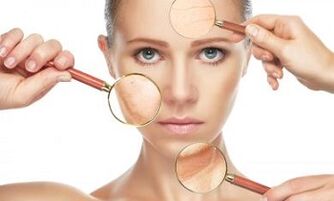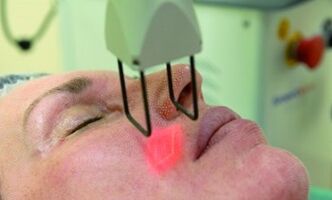
The external manifestation of skin aging is the loss of the appearance of wrinkles, enlarged pores, and a feeling of freshness of the skin. The aging process almost never appears in the early stages, and, therefore, does not attract much attention, but at firstAt the age of 25, the first symptoms of inflammatory disorders are seen: the turer decreases, the texture changes. Later, the skin gradually becomes thinner - the vessels become noticeable, those with hyperpigmentation. Areas appear.
To restore skin's youthfulness, it is not enough to eliminate only visible manifestations of aging - it is necessary to restore the active activity of cells, their renewal and natural mechanisms of growth. Thus, skin not onlyA new look will return, rather it will actually be smaller. Cosmetology achieved real success in 2004, when the method of partial photothermolysis was presented for the treatment of age-related skin changes. This technique has been proven and clinicallyFormally tested - proven to be effective in wrinkle improvement and skin rejuvenation.
Practical application has also shown that partial photothermolysis is easily tolerated, safe and has a high performance in the elimination of cosmetic defects and the return of youth. Today it is one of the most reliable and promising methods of skin rejuvenation and tightening. One, which is recognized as the "gold standard" in solving cosmetic problems. In addition, it is a modern and safe alternative to surgical skin lifting.
Course of procedure, patient's feelings

An integral and pleasant advantage of the partial photothermolysis procedure is its painlessness - only the use of surface anesthesia is required, while the sensitivities are limited to a slight tingling sensation in the area treated with the laser beam.
The anesthetic is applied before the start of the session, which lasts within an hour - the time for treatment varies depending on the size of the surface.
Immediately after its completion, the procedure specialist advises the patient, lubricates the skin with cream and gives detailed instructions for its care.
It should be noted that further skin does not require any special medical care and you can go home on your own.
recovery period
If surgical intervention first requires a longer recovery period, the method of partial laser rejuvenation does not take longer: it does not take more than a week to return to the normal rhythm of life: the method of timing intervention (Degrading) depends on non-ablative). In the first two days after the procedure, the skin may become slightly swollen, on 2–4 days, redness is noted, and in 4–7 days, dead cells begin to peel. , Releases healthy and beautiful skin for breathing and growth.
You can make sure that the Fractional Photothermolysis process shrinks your skin very quickly - after the ablative method of exposure, the skin tightens almost immediately, and in general, after a week, wrinkles easilyFeels out, the complexion clears, the skin texture improves, the face becomes elliptical. To strengthen and maximize the results, several procedures are necessary - they are performed with a difference of about a month. is.
Partial laser rejuvenation lasts up to six months after the end of all procedures, and the effect lasts for many years. In many cases, the outcome is determined by the lifestyle that leads the patient - the program to preserve the youthfulness of the skin. Adherence, as prescribed by the doctor, helps to slow down its aging.
Combination with other methods of rejuvenation
Many patients want to combine fractional laser rejuvenation together with the use of botulinum toxin injection and filler, to increase the effect of rejuvenation. In this case, there are no contraindications - the special study showed a partial laser on collagen and hyaluronic filler. The safety of the effect is confirmed. There is also no restriction for those wishing to perform both the laser rejuvenation procedure and Botox injections on a single day, but for the rejuvenation effect to be greatest, the first fracture course of laser rejuvenationIs recommended to complete. Most likely, the achieved effect will not require any extra effort to restore the beauty and puberty of your skin.
Process differences
Partial laser rejuvenation should not be performed if there are common medical differences:
- Benign and malignant neoplasm in the treatment area.
- Oncological diseases, radiation and chemotherapy.
- Dermatoses, photodermatoses in the process area.
- Family history of vitiligo.
- Herpetic infection in the last month.
- History of keloid scars.
- Acute infectious disease or impaired immunity.
- Chronic diseases (diabetes mellitus, systemic connective tissue disease, blood clotting disorder, thromboembolic disease. )
- Fresh Tan or Tanning in the last month.
- Use of oral retinoids in the last 6 months or topical dermatological agents with retinoids in the last 2 weeks.
- Pregnancy, lactation.
- mental illness.
If there is a contraindication to the procedure, you should temporarily stop to ensure health safety, the very process of fractional laser rejuvenation is completely safe.














































































